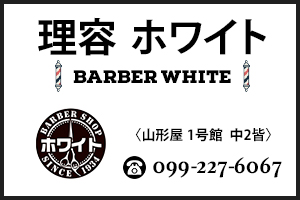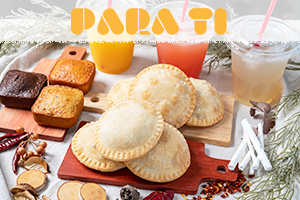The black culture of Kagoshima. Not just pigs or black cows! Know everything about "black"
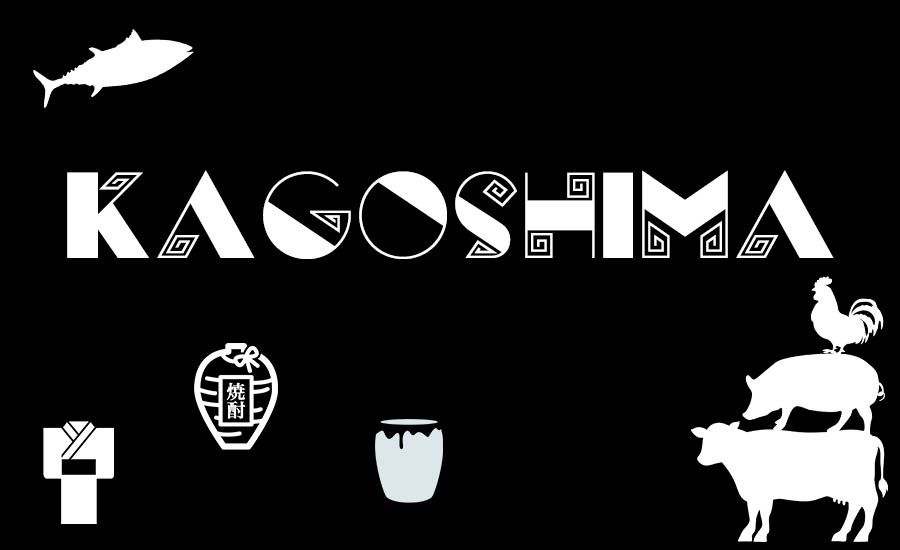 Written by komatsu
Written by komatsu
Translated by A. Osorio
1.11.2021 (Re:24.12.2021)
There are many special products in Kagoshima, and among them it is the “black culture”. Here we present to you everything that has to do with “black” and what it represents to the people of Kagoshima.
1. Kagoshima Kuroushi “Black Cows of Kagoshima”
2. Kagoshima Kurobuta “Black pigs of Kagoshima”
3. Kurosatsumadori “Black Chicken”
4. Kuromaguro “The red or bighorn tuna”
7. Kokuto Shōchu “Brown sugar shōchu”
8. Brown sugar “Tonkotsu, Getanha, Fukuregashi”
9. Kurooshima “Oshima Tsumugi”
10. Kuro Satsuma “Satsumayaki”
11. Kuro Kiriko “Satsuma Kiriko”
1. Kagoshima Kuroushi “Black Cows of Kagoshima”
 Picture courtesy of ©︎K. P. V. B
Picture courtesy of ©︎K. P. V. B
Kagoshima prefecture has the highest podium for the number of Japanese black cow breeding in all of Japan. The brand’s beef, “Kagoshima Kuroushi”, won the number one spot in Japan in the “National Wagyu Skill Promotion Association” competition in 2017, as well as the number of cattle raised.
The characteristics of this meat consist of the fine and extremely tender quality with a well balance marbling.
2. Kagoshima Kurobuta “Black pigs of Kagoshima”
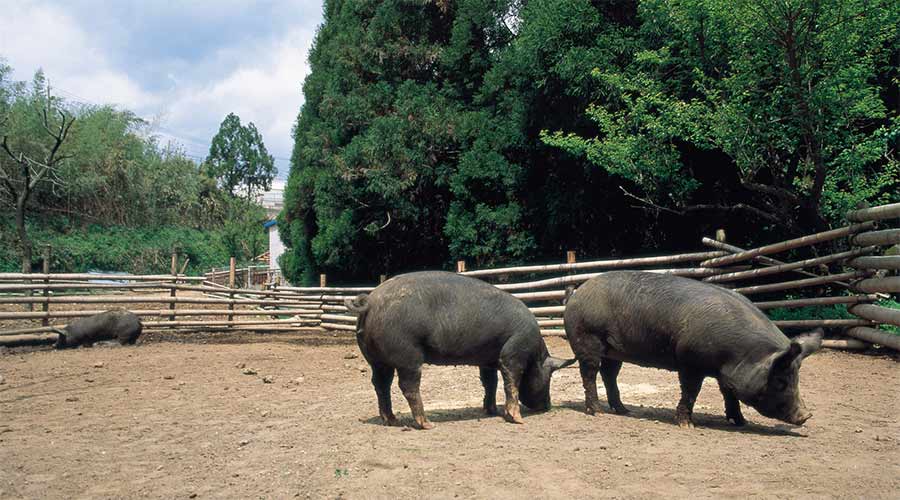 Picture courtesy of ©︎K. P. V. B
Picture courtesy of ©︎K. P. V. B
Black pigs brought to Kagoshima from Ryukyu which is now Okinawa some 400 years ago have long been an important food for the people of Kagoshima. Kagoshima black pigs are all Berkshire pigs and they are also called “Roppaku kurobuta”, it bears this name because it has “six white parts”; on the nose, limbs and tail.
Kagoshima Kurobuta is characterized by its softness, freshness and “umami”.
Kagoshima prefecture has the highest number of pigs in Japan.
| Recomended restaurant
 Here is a renowned shop where you can eat black pork chop in Kagoshima: “Kurobuta”
Here is a renowned shop where you can eat black pork chop in Kagoshima: “Kurobuta”
3. Kurosatsumadori “Black Chicken”
Kurosatsumadori chicken was created 15 years ago as a new “black” product for the Kagoshima display case. It is a new chicken whose father is “Satsumadori”, one of the three most important chickens in Japan and a national natural animal. Its meat has a moderate and umami texture, does not harden when cooked and is delicious even when chilled.
4. Kuromaguro “The red or bighorn tuna”
 The Kuromaguro, kuro = Black, maguro = Tuna or also known as Hon Maguro in Japan, has become one of the most appreciated fish for its incredible flavor. It is known as the best tuna and is characterized by its good amount of fat and its smooth texture that melts when introduced in the mouth.
The Kuromaguro, kuro = Black, maguro = Tuna or also known as Hon Maguro in Japan, has become one of the most appreciated fish for its incredible flavor. It is known as the best tuna and is characterized by its good amount of fat and its smooth texture that melts when introduced in the mouth.
Kagoshima Prefecture, which has hatcheries on Amami Oshima and Koshiki Island, has the second largest production volume in Japan.
5. Kurozu “Black vinegar”
 As the name implies, it is black vinegar and is made from brown rice and barley. The black vinegar is placed in a ceramic container outdoors, exposed to the strong sunlight of tropical Kagoshima during the day and the cool sea breeze of Kinkō Bay at night, and fermented for a year to become vinegar.
As the name implies, it is black vinegar and is made from brown rice and barley. The black vinegar is placed in a ceramic container outdoors, exposed to the strong sunlight of tropical Kagoshima during the day and the cool sea breeze of Kinkō Bay at night, and fermented for a year to become vinegar.
Since it is aged for longer than regular vinegar, it contains abundant amino acids, which is why it is attracting a lot of attention as a health food.
6. Kuro Kōji “Shōchu”
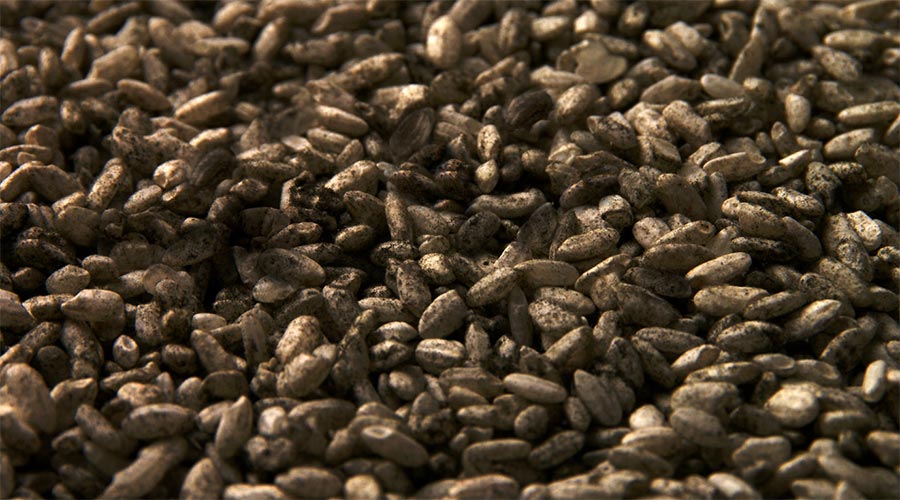 Picture courtesy of ©︎西酒造株式会社
Picture courtesy of ©︎西酒造株式会社
Koji is a microorganism that is the basis of fermented foods used in Japanese food such as miso, soy sauce, sake, etc. Kagoshima Shōchu is generally made with Shiro Kōji (White Kōji), which has a refreshing taste, but in recent years Kuro Kōji (Black Kōji) and Ki Kōji (Yellow Kōji) have also been used, as the microorganisms are different, the taste and aroma of the shōchus are also different.
Shōchu made with Kuro Kōji is characterized by its rich aroma, rich flavor, and umami.
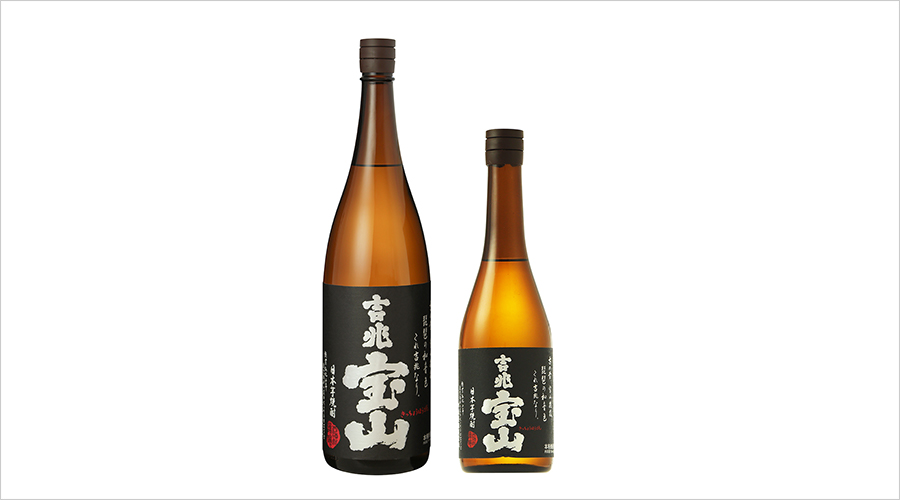 Picture courtesy of ©︎西酒造株式会社
Picture courtesy of ©︎西酒造株式会社
The shōchu with black labels or using “Kuro” (black) in their name, is a guide to publicize the use of this type of microorganism “Kuro Kōji”.
7. Kokuto Shōchu “Brown sugar shōchu”
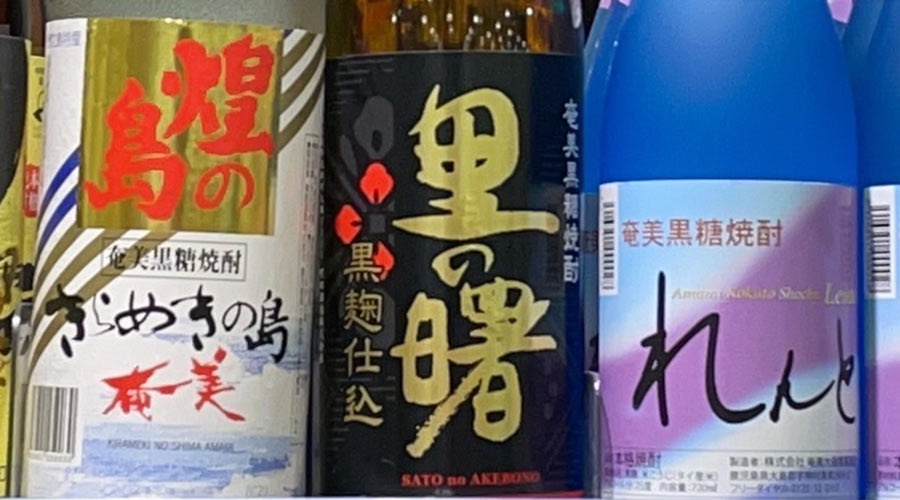 The Kokutō Shōchu (Brown sugar Shōchu) is a Shōchu made with the Kōji of rice and sugar cane juice. This alcoholic beverage is produced only in the Amami islands of Kagoshima prefecture, according to the National Tax Agency related to the Tax Law on Alcoholic Beverages.
The Kokutō Shōchu (Brown sugar Shōchu) is a Shōchu made with the Kōji of rice and sugar cane juice. This alcoholic beverage is produced only in the Amami islands of Kagoshima prefecture, according to the National Tax Agency related to the Tax Law on Alcoholic Beverages.
It is characterized by a slightly sweet and smooth flavor, it is also easy to drink due to its lightness.
8. Brown sugar “Tonkotsu, Getanha, Fukuregashi”
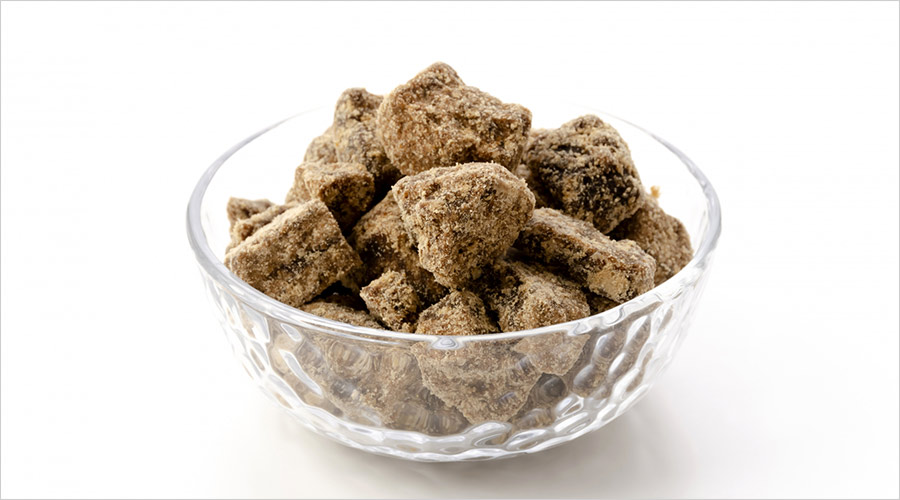 This sugar is made by heating, concentrating, cooling, and hardening the sugarcane juice made in Amami Oshima and Tanegashima in Kagoshima Prefecture. It is so rich in vitamins and minerals that it can be consumed as a nutritional supplement.
This sugar is made by heating, concentrating, cooling, and hardening the sugarcane juice made in Amami Oshima and Tanegashima in Kagoshima Prefecture. It is so rich in vitamins and minerals that it can be consumed as a nutritional supplement.
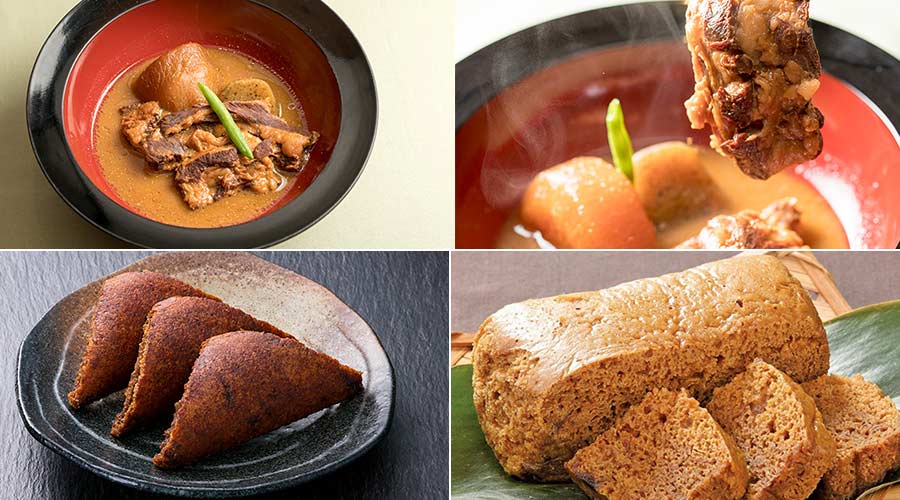 Picture courtesy of ©︎農林水産省
Picture courtesy of ©︎農林水産省
There are also many local dishes and sweets that use brown sugar, such as Tonkotsu (bone-in pork stew, miso, ginger, shochu and brown sugar), Getanha (triangle cake with brown sugar for the dough and topping), Fukuregashi (steamed confectionery made with wheat flour, baking soda and brown sugar), etc.
9. Kurooshima “Oshima Tsumugi”
 Picture courtesy of ©︎K. P. V. B
Picture courtesy of ©︎K. P. V. B
Oshima Tsumugi is a 100% silk fabric that is woven after yarn dyeing with roasted “Sharinbai” juice (Rhaphiolepis umbellata) and “iron-rich mud” found only on the Amami Islands of Kagoshima Prefecture. Oshima Tsumugi is designated as a traditional handicraft.
 Picture courtesy of ©︎K. P. V. B
Picture courtesy of ©︎K. P. V. B
It features a pattern with the nature of Amami as the motif, fine dyed and woven based on deep black. It has a sleek sheen, is flexible, lightweight, and unlikely to wrinkle. It is said to be a strong and durable fabric that can be used for 150 to 200 years because the fabric has neither a front nor a back.
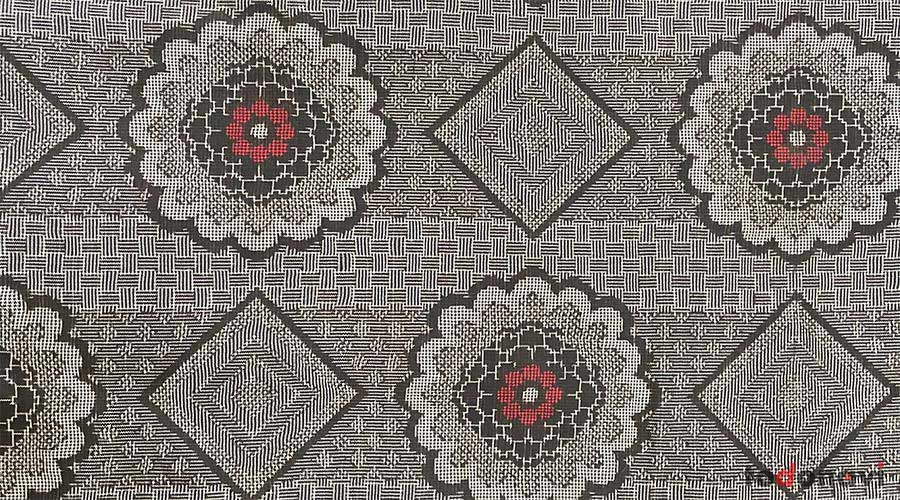 Oshima Tsumugi is known as one of the top three Tsumugis in Japan along with Yuki Tsumugi and Shiozawa Tsumugi, but it is also said to be one of the top three textiles in the world along with Gobelin fabric (France) and Persian carpet (Iran).
Oshima Tsumugi is known as one of the top three Tsumugis in Japan along with Yuki Tsumugi and Shiozawa Tsumugi, but it is also said to be one of the top three textiles in the world along with Gobelin fabric (France) and Persian carpet (Iran).
10. Kuro Satsuma “Satsumayaki”
 Picture courtesy of ©︎K. P. V. B
Picture courtesy of ©︎K. P. V. B
In Kagoshima prefecture, there are two types of ceramics called “Satsumayaki”, these are the “Shiro Satsuma (White Satsuma)” and “Kuro Satsuma (Black Satsuma)” and they are designated as traditional crafts. The shiro satsuma is characterized by its elegance, beautiful designs and figures captured on a white base, which were made exclusively for the feudal lord. On the other hand, kuro satsuma is made mainly for basic needs and daily use, it is for this reason that they are more robust and simple design.
 The clay kettle called “Kurojoka” is used to drink hot Shōchu, taking advantage of its characteristic of resisting high temperatures.
The clay kettle called “Kurojoka” is used to drink hot Shōchu, taking advantage of its characteristic of resisting high temperatures.
The Shiro Satsuma, one of the satsuma ceramics, was exhibited at the Paris Exposition of 1867 receiving high praise throughout Europe and became known to the world as “SATSUMA.”
11. Kuro Kiriko “Satsuma Kiriko”
 Picture courtesy of ©︎薩摩びーどろ工芸株式会社
Picture courtesy of ©︎薩摩びーどろ工芸株式会社
Satsuma Kiriko is a cut glass that has been produced in the Satsuma area (now Kagoshima Prefecture) it’s believe, it was produce for about 20 years since the 1850s. Then its manufacture stop, but about 100 years later reconstruction began. Presently it’s elaborated in Kagoshima city.
 Picture courtesy of ©︎K. P. V. B
Picture courtesy of ©︎K. P. V. B
In addition to indigo, green, yellow, golden red and violet, in recent years black has also developed, including red, which is called “red Satsuma glass” and has become a representative color of Satsuma Kiriko.
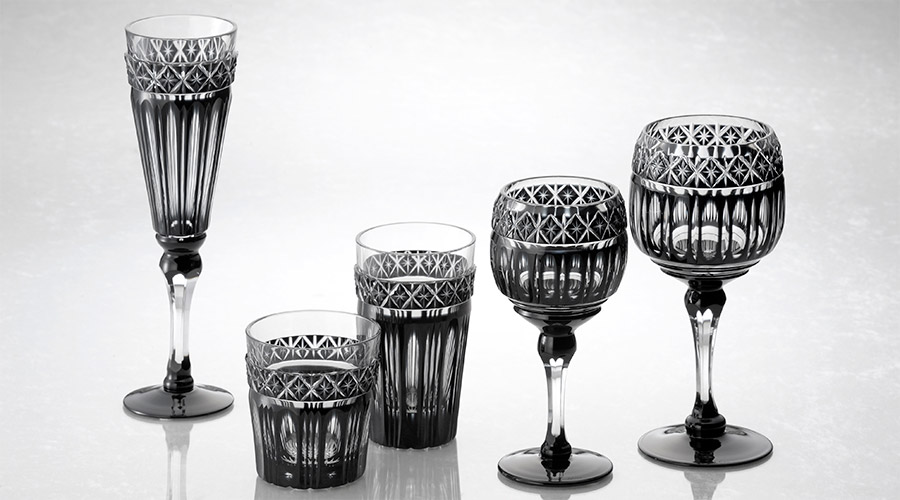 Picture courtesy of ©︎薩摩びーどろ工芸株式会社
Picture courtesy of ©︎薩摩びーどろ工芸株式会社
“Satsuma Kiriko” is made by covering the transparent glass with colored glass, then the colored glass is cut and the gradation that is generated is called “blur” which is the main attraction of this beautiful handicraft.
| Recommended Products
| Recommended Articles
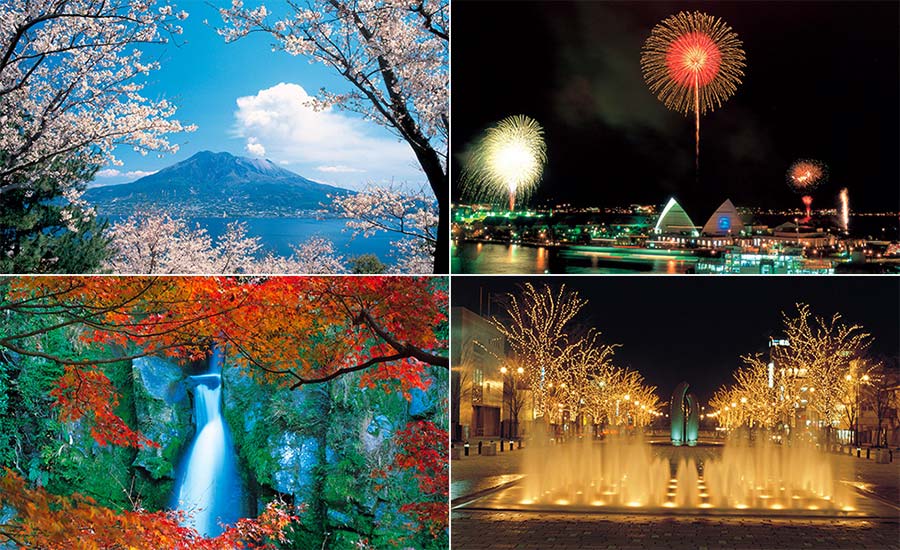 Things Kagoshima ranks first in Japan
Things Kagoshima ranks first in Japan
Written by komatsu
Translated by A. Osorio
The information in this article was current at the time of coverage and writing.
・・・ todonavi ・・・
